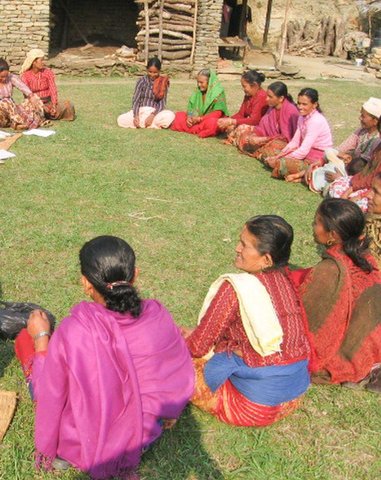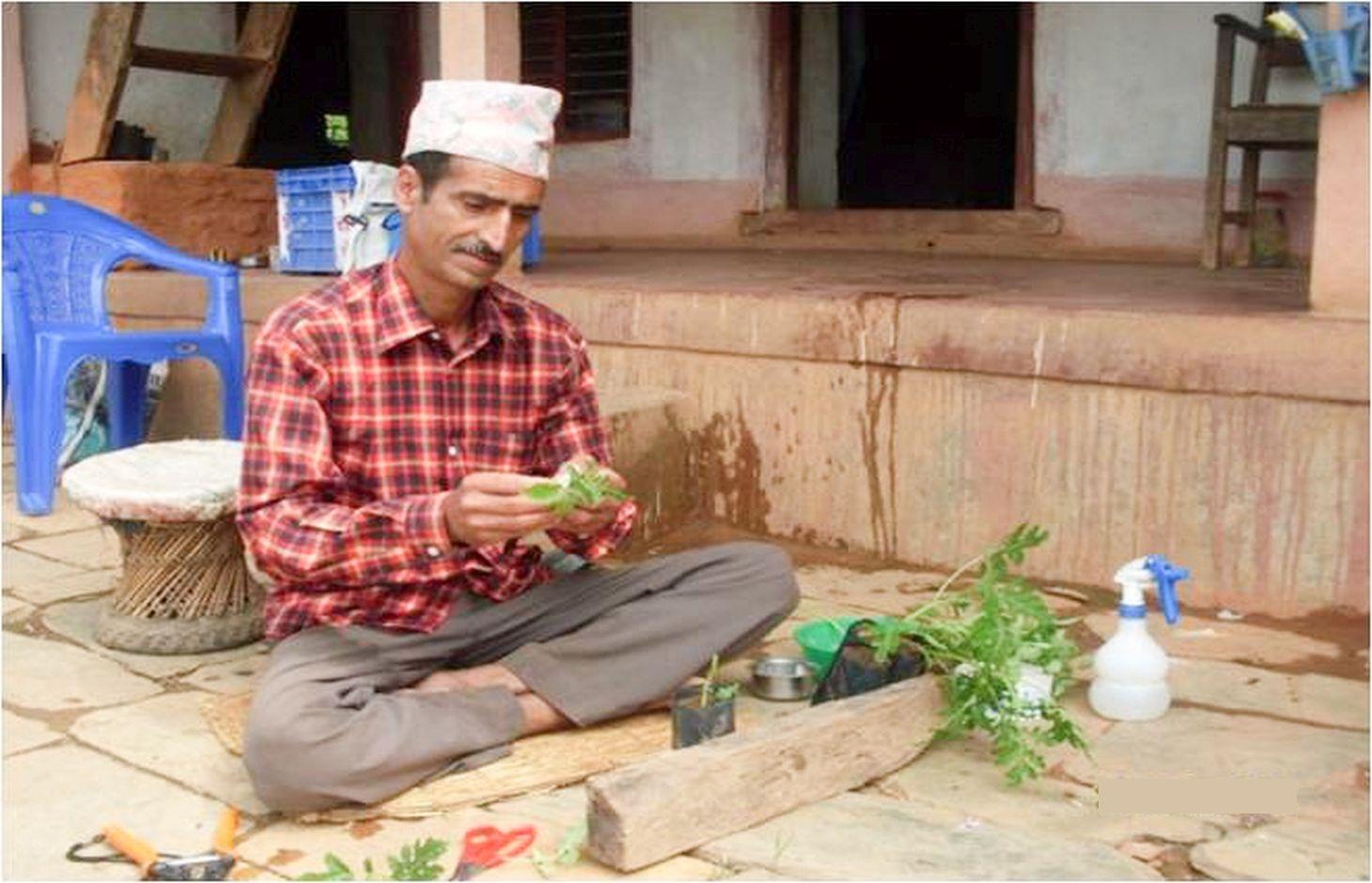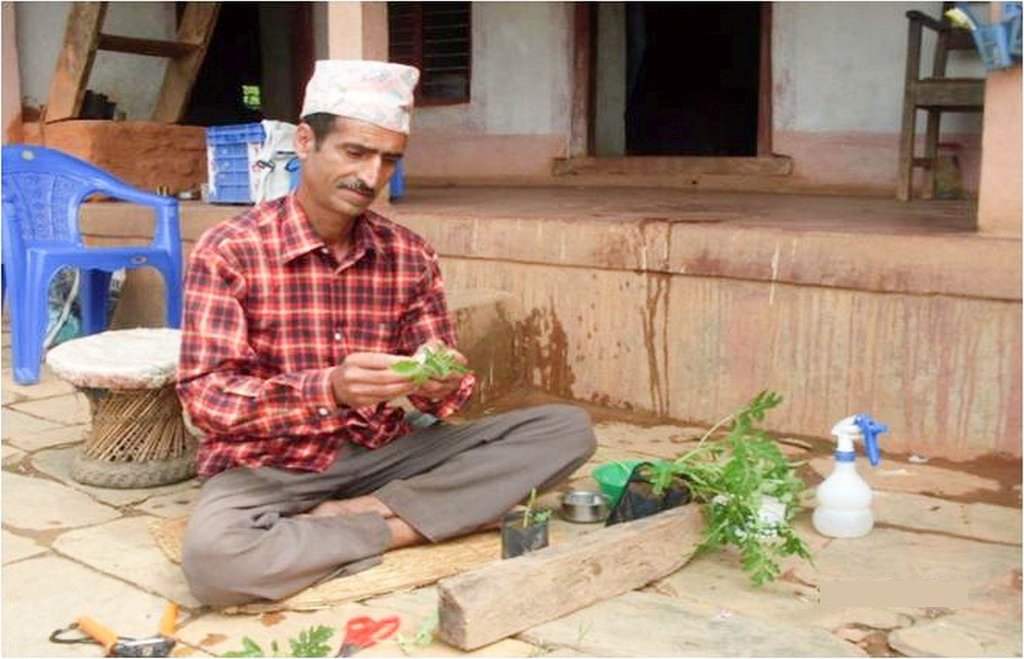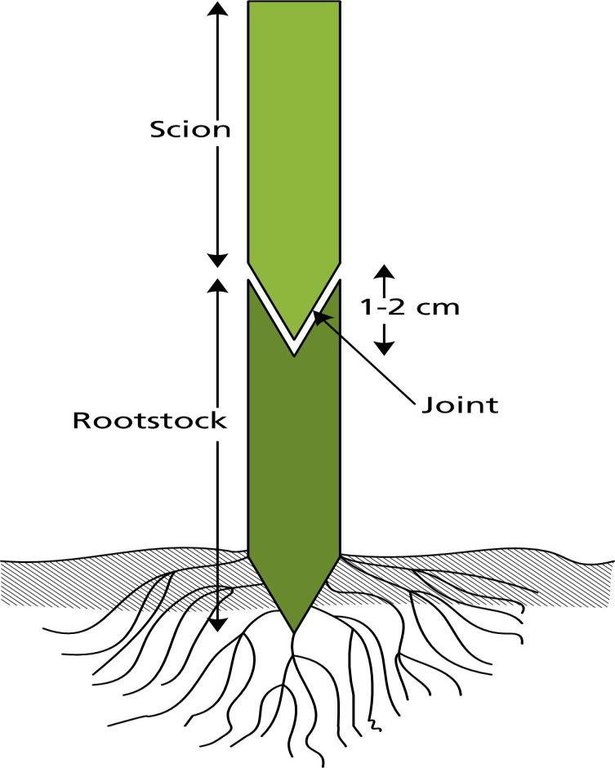Tomato Grafting [Népal]
- Création :
- Mise à jour :
- Compilateur : Shreedip Sigdel
- Rédacteur : –
- Examinateur : David Streiff
Kalami Prabidhi Dwara Golbheda Uthapadan (Main Contributor: Purusottam Gupta, IDE Nepal)
technologies_1694 - Népal
Voir les sections
Développer tout Réduire tout1. Informations générales
1.2 Coordonnées des personnes-ressources et des institutions impliquées dans l'évaluation et la documentation de la Technologie
Spécialiste GDT:
Gupta Purusottam
9847301749
puru-sottam_gupta@yahoo.co.in
IDE-Nepal, currently NEAT project
Inde
Spécialiste GDT:
Nom du ou des institutions qui ont facilité la documentation/ l'évaluation de la Technologie (si pertinent)
ICIMOD International Centre for Integrated Mountain Development (ICIMOD) - NépalNom du ou des institutions qui ont facilité la documentation/ l'évaluation de la Technologie (si pertinent)
iDE Nepal (iDE Nepal) - Népal1.3 Conditions relatives à l'utilisation par WOCAT des données documentées
Quand les données ont-elles été compilées (sur le terrain)?
01/03/2013
Le compilateur et la(les) personne(s) ressource(s) acceptent les conditions relatives à l'utilisation par WOCAT des données documentées:
Oui
1.5 Référence au(x) questionnaire(s) sur les Approches de GDT

Using the participatory market chain approach to help … [Népal]
Discussions and structured interactions between farmers and the different actors involved throughout the market chain can help to stimulate joint innovations based on shared ideas and mutual trust.
- Compilateur : Shreedip Sigdel
2. Description de la Technologie de GDT
2.1 Courte description de la Technologie
Définition de la Technologie:
Cleft grafting can be used to produce plants that are resistant to a number of pests and diseases and are often higher yielding than the original. Tomato seedlings can be easily grafted onto resistant root stock of the wild eggplant (Solanum sysimbrifolium) to produce a disease-resistant and commercially viable crop.
2.2 Description détaillée de la Technologie
Description:
Some of Nepal's most lucrative vegetable cash crops, especially solanaceous crops such as tomato and eggplant, are particularly susceptible to attack by the root knot nematode, Meliodogyne spp, which costs Nepal's farmers millions of rupees in losses annually. In recent years, farmers found that this pest was becoming prevalent and that they could not control it permanently using either cheap or eco-friendly solutions. Researchers and development officers took up the challenge and found that grafting technology could successfully control not only the root knot nematode but also wilting disease. As a bonus, they also found that grafting can increase the yield potential of the plants and improve the overall productivity of the land.
Establishment / maintenance activities and inputs: Loam and silt loam soils with a pH of 6.0–7.0 are the most suitable for this type of cultivation. Grafting technology requires two plants: the scion and the rootstock. The scion is a detached shoot or twig containing buds from the desired woody plant. The rootstock is a plant with an established healthy root system, onto which a cutting or a bud from another plant is grafted. The scion seedlings are grown in raised solarized nursery beds, where care has been taken to see that the soil has been sterilised and all soil pests have been destroyed. Robust rootstock of wild eggplant (Solanum sysimbrifolium) is appropriate for tomato propagation. The rootstock seedlings are grown in multi cell trays and transplanted when they are 20–25 cm high and have a few leaves and a pencil thick stalk. Seeds for the rootstock seedlings are sown in March/April and are ready in 6–8 weeks; scion seeds are sown in April/May and are ready for grafting in 3–4 weeks. Both scion and rootstock plants should have achieved similar stalk thicknesses at the time of grafting. Cleft grafting is carried out and the grafted seedlings kept in polypots in a closed polyhouse for 7–10 days. Then the grafted seedlings are carefully transplanted to their permanent location. The grafted plants are watered the day after they are transplanted; the extent of watering depends on how moist the soil is and on local weather conditions. The field is mulched throughout the cropping period using straw and other farm biomass materials.
2.3 Photos de la Technologie
2.5 Pays/ région/ lieux où la Technologie a été appliquée et qui sont couverts par cette évaluation
Pays:
Népal
Autres spécifications du lieu:
Arukharka -6, Syangja District
2.7 Introduction de la Technologie
Spécifiez comment la Technologie a été introduite: :
- par le biais de projets/ d'interventions extérieures
3. Classification de la Technologie de GDT
3.1 Principal(aux) objectif(s) de la Technologie
- améliorer la production
3.2 Type(s) actuel(s) d'utilisation des terres, là où la Technologie est appliquée

Terres cultivées
- Cultures annuelles
Commentaires:
Major land use problems (compiler’s opinion): Insufficient water for irrigation, the soil is acidic, vegetable crops are attacked by pests and crop production is in decline.
3.3 Informations complémentaires sur l'utilisation des terres
Approvisionnement en eau des terres sur lesquelles est appliquée la Technologie:
- pluvial
3.4 Groupe de GDT auquel appartient la Technologie
- lutte intégrée contre les ravageurs et les maladies (incluant l'agriculture biologique)
- amélioration des variétés végétales, des races animales
3.5 Diffusion de la Technologie
Spécifiez la diffusion de la Technologie:
- répartie uniformément sur une zone
Si la Technologie est uniformément répartie sur une zone, indiquez la superficie couverte approximative:
- < 0,1 km2 (10 ha)
3.6 Mesures de GDT constituant la Technologie

pratiques agronomiques
- A5: Gestion des semences, amélioration des variétés
3.7 Principaux types de dégradation des terres traités par la Technologie

dégradation chimique des sols
- Cn: baisse de la fertilité des sols et réduction du niveau de matière organique (non causée par l’érosion)

dégradation biologique
- Bp: augmentation des insectes nuisibles (ravageurs)/ maladies, baisse des prédateurs

dégradation hydrique
- Hs: changement de la quantité d’eau de surface
Commentaires:
Main causes of degradation: soil management, other human induced causes (specify) (Overuse of chemical Fertilizer), droughts
3.8 Prévention, réduction de la dégradation ou réhabilitation des terres dégradées
Spécifiez l'objectif de la Technologie au regard de la dégradation des terres:
- prévenir la dégradation des terres
4. Spécifications techniques, activités, intrants et coûts de mise en œuvre
4.1 Dessin technique de la Technologie
4.2 Spécification/ explications techniques du dessin technique
Schematic diagram of a tomato scion grafted on to the rootstock of a wild eggplant.
Technical knowledge required for field staff / advisors: high
Main technical functions: Reduce Pest Attack, Improve crop production
4.3 Informations générales sur le calcul des intrants et des coûts
autre/ monnaie nationale (précisez):
NPR
Indiquer le taux de change du dollars en monnaie locale (si pertinent): 1 USD= :
72,0
4.4 Activités de mise en place/ d'établissement
| Activité | Type de mesures | Calendrier | |
|---|---|---|---|
| 1. | Prepare the land | Agronomique | |
| 2. | Prepare Scions | Agronomique | |
| 3. | Prepare rootstock | Agronomique | |
| 4. | Grafting | Agronomique | |
| 5. | Transplant grafted Seedling | Agronomique |
4.5 Coûts et intrants nécessaires à la mise en place
| Spécifiez les intrants | Unité | Quantité | Coûts par unité | Coût total par intrant | % des coût supporté par les exploitants des terres | |
|---|---|---|---|---|---|---|
| Main d'œuvre | Prepare the land | persons/day | 5,0 | 4,2 | 21,0 | 100,0 |
| Equipements | Tools | unit | 1,0 | 22,0 | 22,0 | 100,0 |
| Matériel végétal | Seeds | unit | 1,0 | 28,0 | 28,0 | 100,0 |
| Engrais et biocides | Fertilizer | unit | 1,0 | 17,0 | 17,0 | 100,0 |
| Engrais et biocides | Compost/manure | unit | 1,0 | 65,0 | 65,0 | 100,0 |
| Engrais et biocides | Pesticide | unit | 1,0 | 21,0 | 21,0 | 100,0 |
| Engrais et biocides | Plant tonic | unit | 1,0 | 7,0 | 7,0 | 100,0 |
| Matériaux de construction | Polypot,grafting chamber etc | unit | 1,0 | 225,0 | 225,0 | 100,0 |
| Coût total de mise en place de la Technologie | 406,0 | |||||
4.6 Activités d'entretien/ récurrentes
| Activité | Type de mesures | Calendrier/ fréquence | |
|---|---|---|---|
| 1. | Both scion and rootstock seeds are watered after sowing. The seedlings are monitored and watered as needed. (Overall labor: 16 person days) | Agronomique | |
| 2. | After transplanting, the grafted seedlings are watered the next day and twice weekly thereafter. As the plantlets mature, they are watered at 10-day intervals and the surface of the soil is mulched. The moisture level in the soil is monitored throughout the cropping period. | Agronomique | |
| 3. | Top dressing with biofertilizers (N, P, K, and vesicular arbuscular mycorrhiza VAM) and bio-hume is applied to the root zone. | Agronomique |
4.7 Coûts et intrants nécessaires aux activités d'entretien/ récurrentes (par an)
| Spécifiez les intrants | Unité | Quantité | Coûts par unité | Coût total par intrant | % des coût supporté par les exploitants des terres | |
|---|---|---|---|---|---|---|
| Main d'œuvre | Watering scion and rootstock | persons/day | 16,0 | 4,25 | 68,0 | 100,0 |
| Equipements | Electricity and water charger | unit | 1,0 | 8,5 | 8,5 | 100,0 |
| Matériel végétal | Seeds | unit | 1,0 | 68,0 | 68,0 | 100,0 |
| Coût total d'entretien de la Technologie | 144,5 | |||||
Commentaires:
Machinery/ tools: spade, scissors, sharp scalpel, multi cell tray, hoe, plough
4.8 Facteurs les plus importants affectant les coûts
Décrivez les facteurs les plus importants affectant les coûts :
All costs and amounts are rough estimates by the technicians and authors.
5. Environnement naturel et humain
5.1 Climat
Précipitations annuelles
- < 250 mm
- 251-500 mm
- 501-750 mm
- 751-1000 mm
- 1001-1500 mm
- 1501-2000 mm
- 2001-3000 mm
- 3001-4000 mm
- > 4000 mm
Zone agro-climatique
- subhumide
Thermal climate class: subtropics
5.2 Topographie
Pentes moyennes:
- plat (0-2 %)
- faible (3-5%)
- modéré (6-10%)
- onduleux (11-15%)
- vallonné (16-30%)
- raide (31-60%)
- très raide (>60%)
Reliefs:
- plateaux/ plaines
- crêtes
- flancs/ pentes de montagne
- flancs/ pentes de colline
- piémonts/ glacis (bas de pente)
- fonds de vallée/bas-fonds
Zones altitudinales:
- 0-100 m
- 101-500 m
- 501-1000 m
- 1001-1500 m
- 1501-2000 m
- 2001-2500 m
- 2501-3000 m
- 3001-4000 m
- > 4000 m
5.3 Sols
Profondeur moyenne du sol:
- très superficiel (0-20 cm)
- superficiel (21-50 cm)
- modérément profond (51-80 cm)
- profond (81-120 cm)
- très profond (>120 cm)
Texture du sol (de la couche arable):
- moyen (limoneux)
Matière organique de la couche arable:
- moyen (1-3%)
Si disponible, joignez une description complète du sol ou précisez les informations disponibles, par ex., type de sol, pH/ acidité du sol, capacité d'échange cationique, azote, salinité, etc.
Soil fertility is high
Soil drainage / infiltration is good
Soil water storage capacity is medium
5.4 Disponibilité et qualité de l'eau
Profondeur estimée de l’eau dans le sol:
> 50 m
Disponibilité de l’eau de surface:
faible/ absente
Qualité de l’eau (non traitée):
eau potable
5.5 Biodiversité
Diversité des espèces:
- élevé
5.6 Caractéristiques des exploitants des terres appliquant la Technologie
Orientation du système de production:
- mixte (de subsistance/ commercial)
Revenus hors exploitation:
- 10-50% de tous les revenus
Individus ou groupes:
- individu/ ménage
Niveau de mécanisation:
- traction animale
Indiquez toute autre caractéristique pertinente des exploitants des terres:
Population density: 200-500 persons/km2
Annual population growth: 0.5% - 1%
Relative level of wealth: rich, average, poor
20% of the land users are rich.
30% of the land users are average wealthy.
50% of the land users are poor.
5.7 Superficie moyenne des terres détenues ou louées par les exploitants appliquant la Technologie
- < 0,5 ha
- 0,5-1 ha
- 1-2 ha
- 2-5 ha
- 5-15 ha
- 15-50 ha
- 50-100 ha
- 100-500 ha
- 500-1 000 ha
- 1 000-10 000 ha
- > 10 000 ha
5.8 Propriété foncière, droits d’utilisation des terres et de l'eau
Propriété foncière:
- individu, avec titre de propriété
Droits d’utilisation des terres:
- individuel
Droits d’utilisation de l’eau:
- communautaire (organisé)
6. Impacts et conclusions
6.1 Impacts sur site que la Technologie a montrés
Impacts socio-économiques
Production
production agricole
Revenus et coûts
revenus agricoles
Impacts socioculturels
sécurité alimentaire/ autosuffisance
Impacts écologiques
Biodiversité: végétale, animale
contrôle des animaux nuisibles/ maladies
Autres impacts écologiques
resistance towards pests and disease
maintaining moisture in soil
6.3 Exposition et sensibilité de la Technologie aux changements progressifs et aux évènements extrêmes/catastrophes liés au climat (telles que perçues par les exploitants des terres)
Changements climatiques progressifs
Changements climatiques progressifs
| Saison | Type de changements/ extrêmes climatiques | Comment la Technologie fait-elle face à cela? | |
|---|---|---|---|
| températures annuelles | augmente | pas bien |
Extrêmes climatiques (catastrophes)
Catastrophes météorologiques
| Comment la Technologie fait-elle face à cela? | |
|---|---|
| pluie torrentielle locale | bien |
Autres conséquences liées au climat
Autres conséquences liées au climat
| Comment la Technologie fait-elle face à cela? | |
|---|---|
| réduction de la période de croissance | pas bien |
6.4 Analyse coûts-bénéfices
Quels sont les bénéfices comparativement aux coûts de mise en place (du point de vue des exploitants des terres)?
Rentabilité à court terme:
négative
Rentabilité à long terme:
positive
Quels sont les bénéfices comparativement aux coûts d'entretien récurrents (du point de vue des exploitants des terres)?
Rentabilité à court terme:
neutre / équilibrée
Rentabilité à long terme:
positive
6.5 Adoption de la Technologie
Parmi tous ceux qui ont adopté la Technologie, combien d'entre eux l'ont fait spontanément, à savoir sans recevoir aucune incitation matérielle ou aucun paiement?
- 90-100%
Commentaires:
There is a strong trend towards spontaneous adoption of the Technology
Comments on adoption trend: Most (90%) of the farmers are implementing the technology voluntarily and there is a spontaneous trend for adoption. In the area studied, about 20–30 households per year are adopting this technology.
6.7 Points forts/ avantages/ possibilités de la Technologie
| Points forts/ avantages/ possibilités du point de vue du compilateur ou d'une autre personne ressource clé |
|---|
|
The technology is highly effective at controlling pests and disease. How can they be sustained / enhanced? The wild eggplant rootstocks are somewhat difficult to graft because they are spiny. Spine-free rootstock seedlings would be easier to graft. |
|
The grafted seedlings themselves are a good source of income for farmers. How can they be sustained / enhanced? Create awareness among farmers and encourage nurseries to provide grafted seedlings. Support farmers during the start-up stage. |
6.8 Faiblesses/ inconvénients/ risques de la Technologie et moyens de les surmonter
| Faiblesses/ inconvénients/ risques du point de vue du compilateur ou d'une autre personne ressource clé | Comment peuvent-ils être surmontés? |
|---|---|
| Grafting is time consuming and difficult because wild eggplant rootstock plants are spiny. | Need more research to identify other possible rootstock plants. |
| Grafting can be expensive and requires an initial investment in training; specialized materials are needed. Technically demanding, needs practise. Specialized materials are difficult to get. | Nurseries need to be supported and need to have access to specialized materials on time. |
Liens et modules
Développer tout Réduire toutLiens

Using the participatory market chain approach to help … [Népal]
Discussions and structured interactions between farmers and the different actors involved throughout the market chain can help to stimulate joint innovations based on shared ideas and mutual trust.
- Compilateur : Shreedip Sigdel
Modules
Aucun module trouvé





